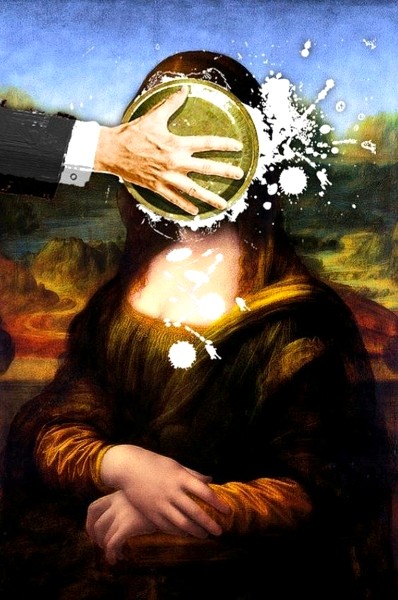When any normal person takes a look at the church of St Mary Magdalene in Rennes-le-Château they see it as just any other Roman Catholic Church. I have seen many of them both in England and in France. They all look pretty much the same. But when a True Believer looks in the church he or she looks at wonders, marvels and mysteries. They even witness the meaning of life itself.
Not everyone has fallen for the rubbish found in the heavily intoxicated Rennes-le-Château treasure books – for example, not the Carcassonne Bishopric or the Society for the Scientific Study of the Aude (Société d'Etudes Scientifiques de l'Aude). To this we may also add people like Jean Girou, René Espeut, Mgr Georges Boyer, Jacques Cholet, Roger Crouquet, Brian Innes and Marie-France Etchegoin – as well as the well-known sceptical authors René Descadeillas, Abbé Bruno de Monts, Jean-Jacques Bedu, Bill Putnam, John Edwin Wood, Jean-Luc Chaumeil and David Rossoni.
The vast majority of other people in society are completely disinterested. The people who work at my local library still haven't heard about the subject matter of Rennes-le-Château, although of course they are aware of the novel by Dan Brown, “The Da Vinci Code”.
French Freemasonry is said to have been involved with the Jacobite Movement after King James VII of Scotland, who was also King James I of England, was deposed and escaped to France in 1688 – because of his Catholic beliefs and wanting to convert England back to Catholicism, “Bonnie Prince Charlie” (Charles Edward Stuart), the grandson of King James I led an unsuccessful rebellion in 1745 against the Hanoverian “usurper” King George II.
Interestingly, the oldest Speculative Freemasonic Rituals in existence are the Minutes of the Aitchison’s Haven Lodge (1598) and the Haughfoot Lodge Minute (1702) – both of which are Scottish. Therefore it could be considered that Freemasonry served as a cover for Roman Catholicism.
Freemasonry was proscribed by Pope Clement XII in 1738, which was updated in 1983 with Canon 1374: “A person who joins an association which plots against the Church is to be punished with a just penalty; one who promotes or takes office in such an association is to be punished with an interdict”. Roman Catholicism and Freemasonry were deemed incompatible systems of beliefs and Catholics were not allowed to be Freemasons.
However, the tradition of Roman Catholics belonging to their own form of Freemasonry in France continued. Called Le Grand Occident – in opposition to the Republican Le Grand Orient (which absorbed atheistic Republican principles following the French Revolution) – thus making Le Grand Occident a nonofficial and irregular form of French Freemasonry. The story of the tradition of Le Grand Occident can be read in various articles by Paul Le Cour in his journal “Atlantis” and in his books; involving such grand names as Joseph de Maistre (1753-1821).
Is there any symbolism within the church of St Mary Magdalene in Rennes-le-Château linking it to Le Grand Occident? Even if there was, nobody would ever notice it because Le Grand Occident and Roman Catholicism were identical. More to the point, even if Abbé Bérenger Saunière were linked with Le Grand Occident, proof would be required. Does any evidence exist? And much more to the point, how could Saunière's link with Le Grand Occident be converted into cash? There is more than enough evidence to show that Saunière's source of wealth originated from trafficking in masses – an industry that lasted (in its heyday) between 1898-1914.
The public have encountered some very strange and bizarre books about the subject matter of Rennes-le-Château – anything from the treasure of Queen Blanche of Castille to a Jesus Bloodline to Humanity originating from Orion.
We need evidence to link Abbé Bérenger Saunière with Le Grand Occident. Sadly, this is only another example of Romantic Idealists projecting their imagination onto the subject matter.
